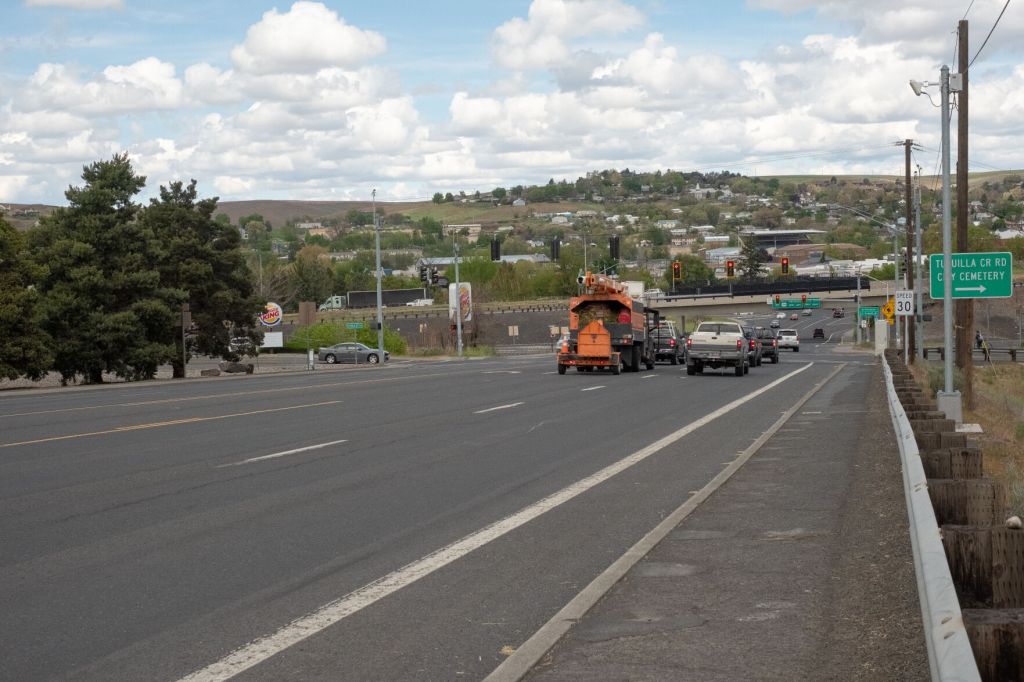Funding the roads more traveled
Published 5:00 am Friday, August 23, 2024

- The Oregon Legislative Joint Committee on Transportation will be touring roads Aug. 29, 2024, throughout Umatilla County to learn about infrastructure challenges in rural areas and discuss possible ways to generate maintenance revenue.
HERMISTON — Community members can give insight into local challenges with transportation when the Oregon Legislative Joint Committee on Transportation comes Thursday, Aug. 29, to Hermiston.
Trending
The committee, consisting of state senators and representatives, is touring across the state to learn about funding needs and solutions in different areas. In Umatilla County, committee members will tour state, county and local roads and bridges in the morning, then have a roundtable discussion followed by a public comment period and community discussion in the evening.
The event will take place at the Eastern Oregon Trade and Event Center’s great room, 1705 E. Airport Road, Hermiston, with the public hearing 5-7 p.m.
Road funding likely will play a major role in the upcoming legislative session, as House Bill 2017, the highway trust fund, will expire in 2026. Oregon highways are funded via a gas tax formula, 50% of which goes to the state, 30% to the county and 20% to cities. But with cars having better mileage or not even needing fuel, that funding isn’t as reliable as it once was, and legislators need to come up with alternatives.
Trending
Covering the cost
Umatilla County Commissioner Dan Dorran said he wants as many people as possible to attend the meeting because the decisions about funding will be made in the coming legislative session.
“Revenue is going to be, on a state level, about $1.8 billion short,” Dorran said. “Counties and cities really are struggling right now, especially rural and smaller communities.”
Dorran said Umatilla County has 900 miles of state roads, 1,900 miles of county roads and 1,100 miles of city roads, as well as 3,800 miles of private roads. Without sufficient funding that comes from statewide revenue generation, he said, rural communities will be “seriously crippled” and he worries about how cities and counties will maintain their road transportation infrastructure.
“It does come down, to some degree, to a rural versus urban discussion when it comes to funding highways, roads, bridges and the whole transportation network in Oregon,” he said. “My hope is that this road tour, this listening educational tour can really bridge that and kind of get that out of the way early in the conversations.”
Rural representation
Rep. Greg Smith, R-Heppner, also is invested in the outcomes of the upcoming meeting. As a co-vice chair on the state’s Joint Interim Committee on Ways and Means, he helps oversee the state’s budget. He said the transportation meeting will be important for making sure Eastern Oregon is represented in whatever funding plans are made and said he hopes people will turn up to participate.
“The reality is Oregon is growing, and with that growth comes wear and tear on our infrastructure,” Smith said. “And at the end of the day, we need to maintain that infrastructure if we’re going to continue to prosper. The trick, though, is how you pay for it.”
Taxes are where most of the revenue for infrastructure comes from, Smith said, but people don’t want higher taxes if they’re avoidable.
“The majority party will not be able to pass a package without support of the minority party,” Smith said. “If they’re going to ask rural legislators to step up and be collaborative in this effort, then we need to ensure that rural Oregon also benefits.”
Smith added that some of the bigger projects funded by the 2017 bill still haven’t been completed, which can make taxpayers wary of increasing costs again. He added that his role will be ensuring his district and other areas of rural Oregon “will receive their fair appropriation of any new revenue raised.”
One possible way forward
Although there’s still a lot of time before final decisions are made, people are suggesting solutions already. Dorran, for example, is in favor of a road user fee.
Road user fees charge people based on the amount of mileage they travel on roads. Under this kind of revenue generation, people who use the roads more — and therefore have a bigger impact on their maintenance needs — will pay more. Someone driving 100 miles will pay for that mileage while someone only driving 20 miles would pay much less.
Dorran said his main concern with a road user fee is the high administrative cost associated with it, but if the revenue generated is higher than the administrative fees, then he is in favor of some form of the road user tax.
“I think it’s always fair, if you’re going to drive 10 miles, pay for 10 miles,” he said.
Dorran added that one of the reasons he wants members of the public to attend is the meeting will be an opportunity to offer feedback and engage with representatives from ODOT, the League of Oregon Cities, the Association of Oregon Counties and the statewide legislators, which he said does not happen often.
“It’s an incredible opportunity and I can’t shout that loud enough from the heart,” he said, “but we need to take advantage of it.”
Public Hearing Schedule
5:00 p.m. – 5:10 p.m. – ODOT Transportation Funding Review
5:10 p.m. – 7:00 p.m. – Public Comment
Register to give public comment in person at EOTEC. Registration will open 30 minutes ahead of meeting start time. If you require any assistance with registration, email or call the committee staff.
See the full schedule for Thursday, Aug. 29.
Location: Eastern Oregon Trade and Event Center, Great Room 1705 E. Airport Road Hermiston, OR 97838
Persons wishing to attend either the afternoon roundtable or morning tour as observers should contact Patrick Brennan at 503-986-1674 or patrick.h.brennan@oregonlegislature.gov at least 48 hours in advance.









